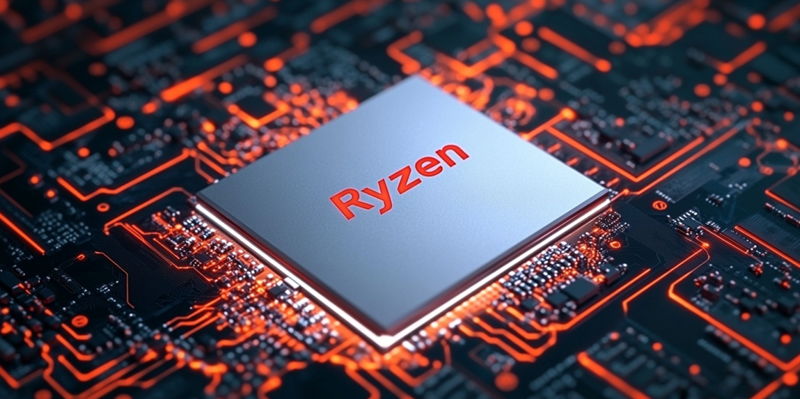In recent years, AMD has made significant strides in developing high-performance gaming CPUs that not only compete with but often surpass their rivals. The AMD Ryzen 7 9800X3D represents a pinnacle in gaming performance, setting new benchmarks in the process. The key to its success lies in innovative design choices, including the integration of second-generation 3D V-Cache technology under the Zen 5 Core Complex Die (CCD). This article delves into the teardown analysis and technical advancements that allow the Ryzen 7 9800X3D to achieve its superior gaming performance.
The Importance of 3D V-Cache Technology
One of the most notable features of the Ryzen 7 9800X3D is its second-generation 3D V-Cache, a technology that significantly enhances CPU performance. Traditionally, AMD’s earlier models like the 7800X3D had their V-Cache on top of the CCD, which posed thermal challenges. In contrast, the 9800X3D places its 3D V-Cache underneath the CCD. This positioning is critical as it allows for better thermal management, crucial for sustaining improved clock speeds and enabling full overclocking capabilities. Enthusiasts performing a teardown of the Ryzen 7 9800X3D on platforms such as Weibo have documented that the 3D V-Cache stack appears shiny blue under the CCD, a stark difference from the shiny gold V-Cache seen in earlier models.
This alteration in stacking has directly impacted the thermal headroom of the Zen 5 X3D CPUs. With enhanced thermal efficiency, the CPU can achieve higher clock speeds, thus delivering superior gaming performance compared to its predecessors. Even when the 9800X3D operates at seemingly lower clock speeds than models like the 9700X, the optimized thermal management ensures that the overall performance remains top-notch. AMD’s decision to explore even more advanced X3D packaging techniques suggests that future iterations of this technology could push gaming performance to unprecedented levels.
Detailed Teardown Analysis
The teardown provided invaluable insights into the physical structure and design improvements within the Ryzen 7 9800X3D. Conducted by an owner on social media, this painstaking process involved using unconventional tools like a heat gun to melt the solder under the Integrated Heat Spreader (IHS), allowing for the manual removal of components. Upon disassembling the chip, the primary chiplets, including the Zen 5 CCD and the IO die, were revealed. The process also involved removing the protective shield over the die by puncturing the CCD to expose the underlying 3D V-Cache stack.
This detailed disassembly demonstrated the ingenuity behind AMD’s stacking methodology. Placing the 3D V-Cache beneath the CCD is more than a mere shift in positioning; it highlights AMD’s focus on optimizing thermal headroom for better performance. This teardown has also shown the difference in material appearances between various V-Cache generations, further indicating incremental advancements in AMD’s packaging techniques. These revelations reinforce why the 9800X3D, with its superior heat management and higher clock speeds, is currently the crown jewel in AMD’s gaming CPU lineup.
Setting New Benchmarks in Gaming Performance
In recent times, AMD has made impressive advancements in creating high-performance gaming CPUs that not only rival but frequently outperform their competitors. The AMD Ryzen 7 9800X3D stands as a testament to this progress, establishing new standards in gaming performance. A significant part of its success can be attributed to inventive design decisions, notably the inclusion of second-generation 3D V-Cache technology within the Zen 5 Core Complex Die (CCD). This integration has been key to boosting its superior gaming capabilities. This article explores the teardown analysis and technical innovations that enable the Ryzen 7 9800X3D to achieve its exceptional gaming prowess. With each iteration, AMD continues to push the envelope, leading to heightened expectations and excitement within the gaming community. By examining these technical advancements, we gain a deeper appreciation for the engineering marvel that is the Ryzen 7 9800X3D, solidifying AMD’s position as a powerhouse in the gaming CPU market.

